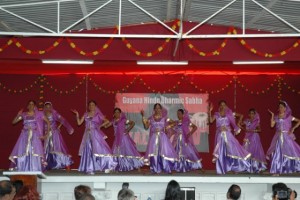Conceived as an innovative way to disseminate and sustain cultural art forms, the Dharmic Sabha’s ‘Kala Utsav’, meaning “festival of arts”, continues to be the launch pad for talented youths from the various regional branches of the Guyana Hindu Dharmic Sabha.
Over fifteen years ago, it was recognised that there was dwindling interest among the young generation in playing the diverse Indian musical instruments; that knowledge of Hindi and the Ramayan was limited to a minority, and trained classical and folk dancers were fewer in numbers. The idea of a cultural forum encouraging friendly competition, with cash and trophy incentives, was born. It is the brainchild of Indrani Persaud.




